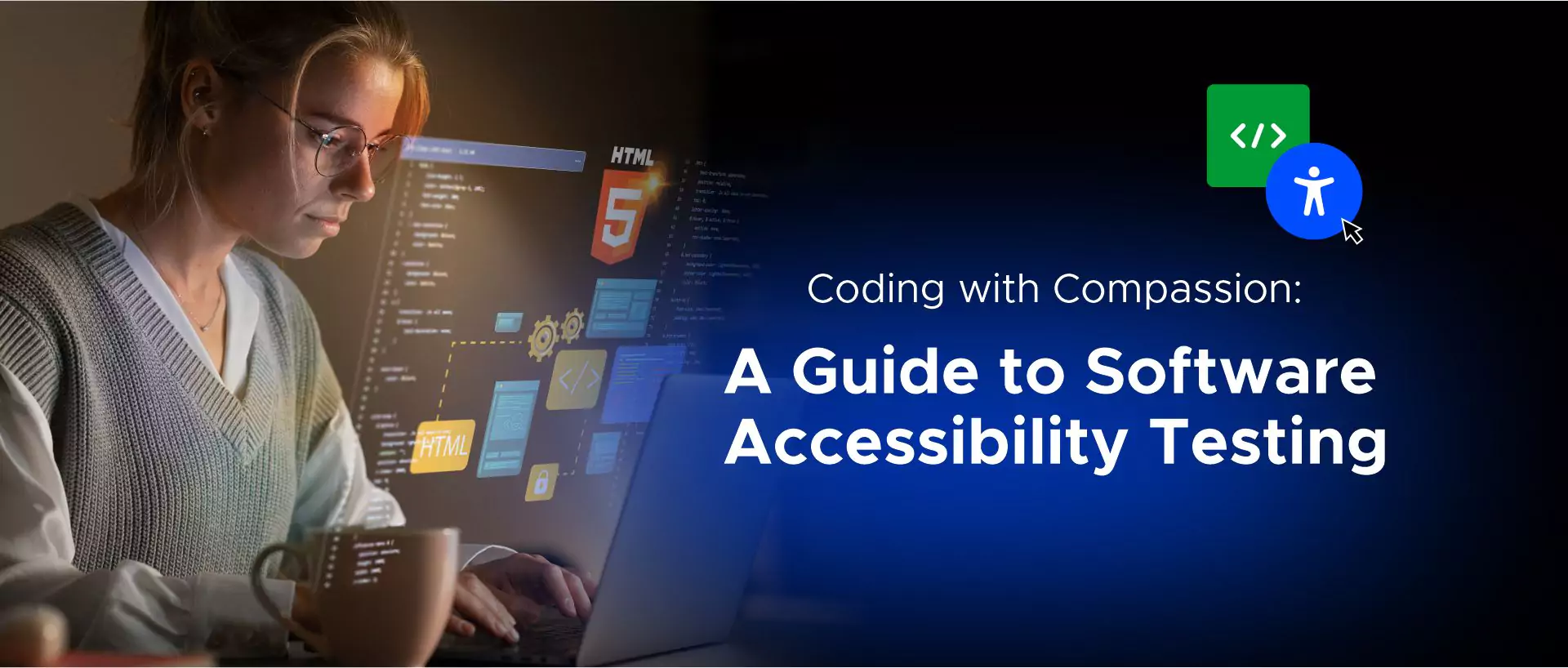
Software accessibility testing is like the guardian of the digital space, ensuring the development of inclusive and welcoming software, applications, and websites. Imagine a digital space where all persons, regardless of their abilities or disabilities, can navigate effortlessly and access information seamlessly. Accessibility testing is the superhero that swoops in to make this vision a reality. It's like a magical wand that assesses whether websites and software are user-friendly for everyone, notwithstanding physical or cognitive limitations.
Crafting software that is technically proficient and considerate of all users is a moral effort. This guide will help you master the art of accessibility testing, an essential component of software development that often goes unnoticed but can potentially change countless people's lives. So, let's unveil its power in ensuring a more accessible and equitable digital world for all. But first, let us explore what accessibility testing in software testing means a little more deeply.
Accessibility testing in software testing is a process that evaluates the usability and functionality of a digital product for individuals with disabilities. It involves assessing whether people with visual, auditory, motor, or cognitive impairments can easily access and use the product.
The goal of accessibility testing is to identify and address any barriers or limitations that may prevent individuals with disabilities from fully utilizing and enjoying the software. This testing is crucial in ensuring that digital products are inclusive and provide equal opportunities for all users. A good software accessibility testing example would be to conduct testing on a mobile banking application.
It involves evaluating if the app can be easily navigated and used by individuals with visual impairments by implementing voice-over technology for screen readers and ensuring proper color contrast for those with color blindness. It also includes testing the app's compatibility with assistive devices like braille displays for individuals with motor impairments.
The most significant benefits for organizations to conduct software accessibility testing are:
Organizations can ensure software accessibility by testing for usability and accessibility, improving the user experience and inclusivity. Users with visual impairments can navigate the software using screen readers, while users with motor impairments can interact with the software using assistive devices. Accessibility testing enhances the usability of the software and allows all users to engage with its features and functionalities fully.
In many countries, including the United States, laws and regulations require software accessible to individuals with disabilities. Failing to act by these regulations can result in legal consequences and potential lawsuits. By making software accessible from the start, companies can avoid these issues and ensure they comply with the law. Additionally, having accessible software demonstrates a commitment to inclusivity and equal access, which can enhance a company's reputation and brand image.
Bonus Read: What is ADA Compliance and Why Does it Matter?
Having accessible software can greatly enhance a brand's reputation. A company's commitment to inclusivity and equal access sends a powerful message to its customers and stakeholders. It shows that the company values diversity and aims to deliver equal opportunities for all individuals, regardless of their abilities. It helps build trust and loyalty among customers, as they see the company as one that cares about their needs and wants to make their experience as positive as possible. In turn, this positive reputation can attract new customers and help to differentiate the company from its competitors.
The business can extend its reach and appeal to a wider range of customers by recognizing and accommodating the varied needs and preferences of people with different abilities. It can be especially important in today's global marketplace, where diversity is valued and expected. Companies that promote inclusivity can reach untapped markets and connect with previously marginalized customers. Expanding the customer base can increase sales and growth opportunities for the company.
Here is a list of the software accessibility testing process:
By following these steps, you can systematically assess and improve the accessibility of your software, making it more inclusive and user-friendly for all individuals, regardless of their abilities or disabilities.
The best digital accessibility services provider in the industry utilize these tools that are known for their effectiveness, ease of use, and robust feature sets, making them the top picks for ensuring software accessibility. However, the choice ultimately relies on your specific project requirements and workflow.
Read Also: Top 5 Web Accessibility Audit Tools for 2023
We have tried to understand what accessibility testing in software testing is through this guide, uncovering its benefits, methodologies, and the shining stars of the accessibility testing tool galaxy, namely, Pa11y and Axe.
Accessibility audit services work as a means of creating a digital world where everyone can participate equally. It's akin to sculpting a masterpiece that transcends barriers, ensuring that individuals with diverse abilities can seamlessly navigate the digital landscape. This intricate process involves meticulous examinations and aligning with standards like the Web Content Accessibility Guidelines to guarantee that the application effectively engages users with visual, auditory, motor, or cognitive limitations.
Share